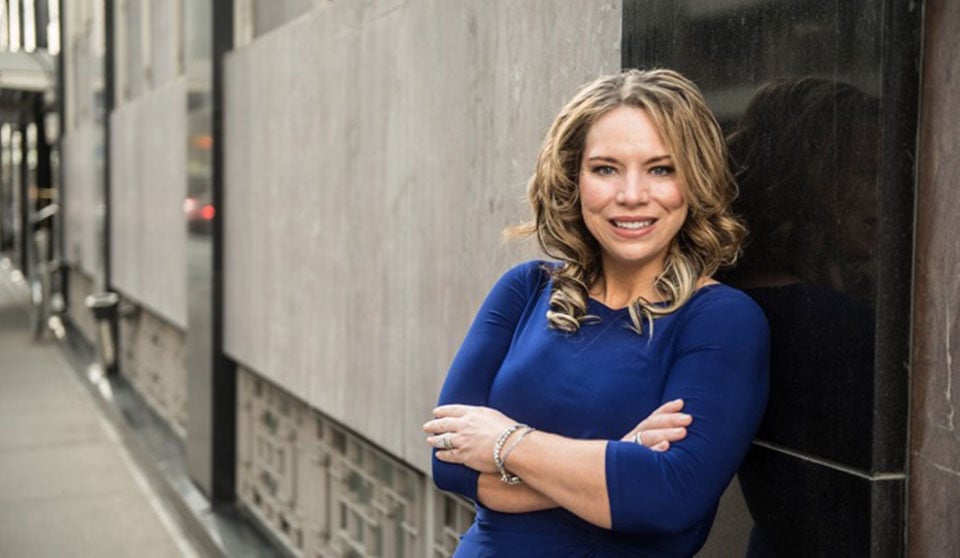Particularly important for women in male-dominated industries, says Women in Safety speaker

No matter what industry they find themselves in, women face many barriers when trying to advance their careers. Fortunately, they can control or influence almost all of them, according to Paula Campkin, vice-president and chief safety officer for Energy Safety Canada in Calgary and chairperson of the Women in Occupational Health & Safety Society (WOHSS). Campkin will be participating in a panel discussion titled Overcoming Common Barriers: Climbing the Corporate Ladder at Canadian Occupational Safety’s upcoming Women in Safety event in Calgary on March 5.
For one, women are often reluctant to claim their achievements and advocate for themselves in the workplace.
“There’s a very fine line between saying, ‘Oh, no, it was the team,’ even if it was you, to boasting. But there is somewhere in the middle,” Campkin says. “Don’t be scared to let your light shine.”
Campkin says she has been guilty of falling into the perfection trap — something many women struggle with. For example, if they get into a new industry, they may feel the need to learn absolutely everything about the industry first, which can hold them back.
“Women are more likely to try and be absolutely perfect. (They are) overvaluing technical expertise,” she says. “But there’s people there that have that. What you have been brought in to do is lead a team… The same skills that have helped you be successful won’t necessarily help you advance to the next level.”
Rather than being a technical expert on everything, Campkin recommends women learn how to work their relationships, network and have conversations, so they can advance their leadership skills.
A lack of access to mentors and sponsors also makes it difficult for women to climb the corporate ladder. Men are still the ones predominantly in senior positions, and men are more likely to mentor and sponsor other men.
“Like often attracts like. A man is more likely to sponsor someone that reminds him of himself at a younger age. It could be completely unbiased, but it does happen,” says Campkin. “There is also potentially a reluctance of men wanting to mentor a woman because there’s fear of the perception of a close professional relationship with a woman.”
To combat this, Campkin recommends women speak up and ask for a mentor. While their boss might not be able to mentor them, they might have someone in mind who can.
Women don’t always have the same networking opportunities, as they may be not even invited to the golf course or a sporting event with senior leaders. They need to seek out networking opportunities and attend as many as possible. (WOHSS regularly hosts networking events for its members.)
Women may also find themselves being excluded on the job — especially in male-dominated industries — and having fewer opportunities for face time with senior management. Campkin has personal experience with this, having worked in construction, utilities and oil and gas throughout her career.
“Often you are the only woman there and there might be times when you’re in a meeting with your executive team and they’re talking about things that they have more information on and you realize, ‘Wait, how come I haven’t been brought up to speed on this?’”
When situations like this arose, Campkin would speak to her boss and explain what she was observing.
“You have to do it in a way where you’re not coming across as whining or emotional but bringing people’s attention to that sort of thing.”
Unfortunately, a major barrier to women’s advancement is hard to control as it is largely unconscious: gender bias. A man might be perceived as being a good boss, while women are seen as bossy. A man might be persuasive, where a woman would be pushy. A man who spends a lot of time at work is dedicated, but a woman is a bad mom.
Bringing awareness to this issue can go a long way.
“If you’re the person it’s happening to or if you’re witnessing it, you say something. It will slowly change the culture,” says Campkin.
Another strategy is to speak to someone else in the organization, preferably a man with influence.
“You can explain where you’re coming from and maybe that person can advocate for you because if it happens and this person is in the room, he can say something,” says Campkin. “And often that will be taken a little bit more seriously rather than, ‘Oh, the woman is over-reacting or is emotional.’”
Women in the safety profession likely have personal experience with this issue and can point to many examples of gender bias, such as personal protective equipment made only to fit men. Unlike women in health care or other predominantly female sectors, safety professionals often find themselves working in male-dominated industries where the barriers to advancement are even greater.
Find out more ways to overcome these barriers at the Women in Safety event on March 5 in Calgary.






